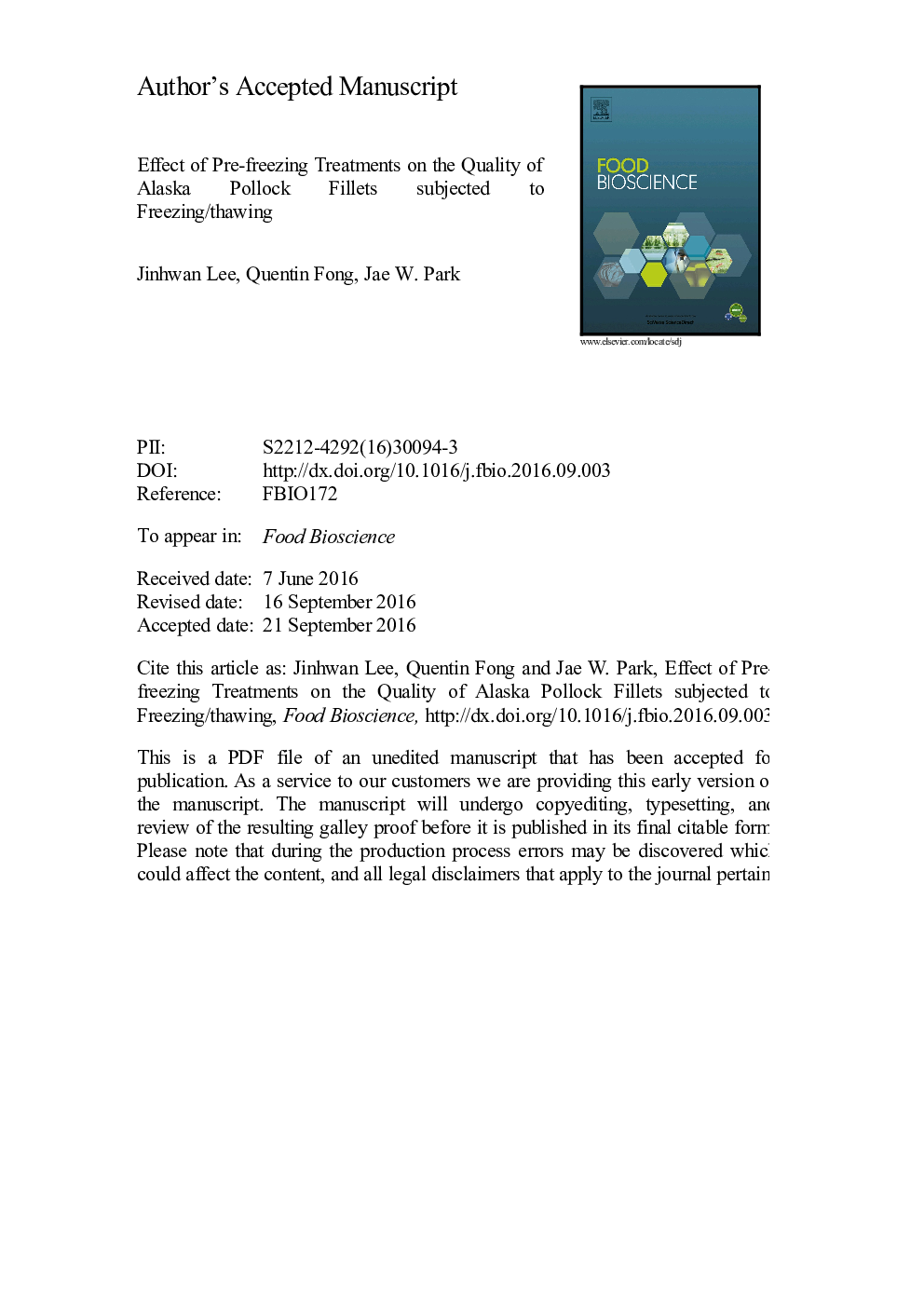| Article ID | Journal | Published Year | Pages | File Type |
|---|---|---|---|---|
| 6489029 | Food Bioscience | 2016 | 30 Pages |
Abstract
Alaska pollock, immediately frozen at sea in the Bering Sea, were thawed in a cold room until the fish core temperature reached â1.5 °C. Whole fish (WF) and headed and gutted fish (HF), stored under refrigeration for 0, 4, 8 and 12 h, were subsequently filleted and frozen at â18 °C. Fillets were subjected to freezing/thawing (F/T) cycles (0, 3, 6, and 12 cycles) before measuring biochemical and textural properties. Trimethylamine-N-oxide demethylase (TMAOase), formaldehyde (FA) and dimethylamine (DMA) contents in the HF group significantly increased as F/T cycles repeated. FA and DMA content at 12-F/T decreased when refrigeration time before filleting increased. Decreases in surface hydrophobicity at 12-F/T led to textural toughening of frozen fillets due to protein aggregation by FA. F/T, which mimics long-term commercial frozen storage, possibly accelerated the release and accumulation of TMAOase through due to ice crystal formation and its subsequent growth. As a result, rapid quality deterioration was observed as F/T was repeated.
Keywords
Related Topics
Physical Sciences and Engineering
Chemical Engineering
Bioengineering
Authors
Jinhwan Lee, Quentin Fong, Jae W. Park,
